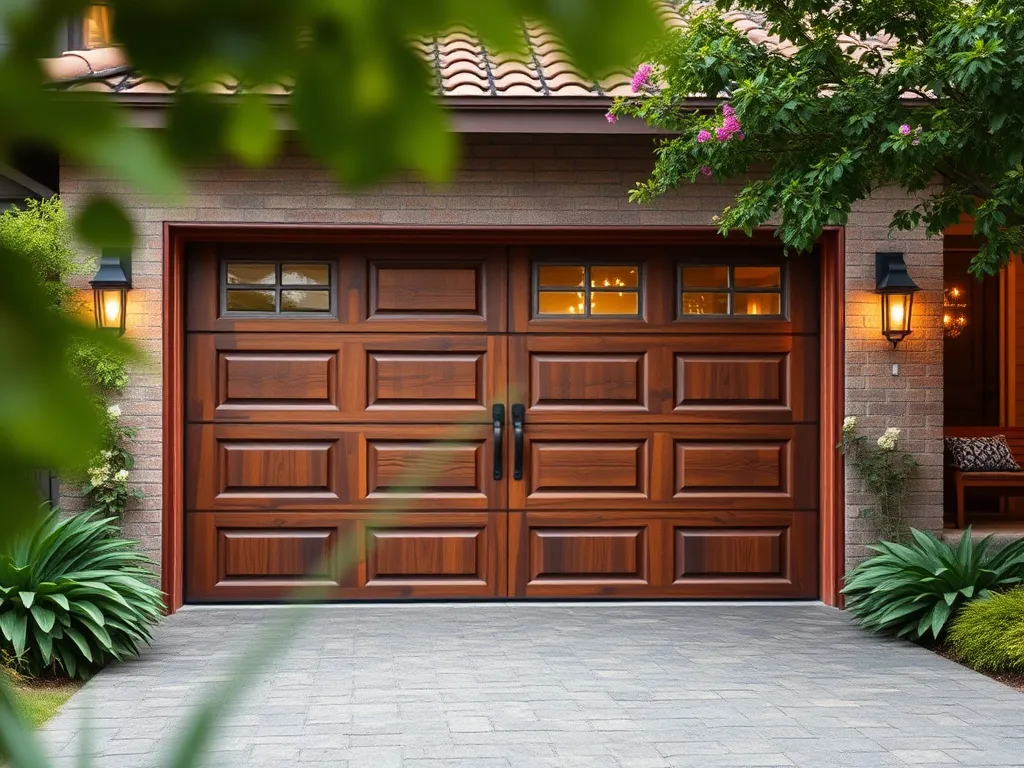Revitalize Your Space: Retrofitting an Old Garage Door

Retrofitting an Old Garage Door: A Comprehensive Guide
Retrofitting an old garage door can be a rewarding project that enhances the functionality and aesthetics of your home. By upgrading your existing garage door, you can improve energy efficiency, boost property value, and achieve a more modern look. This process involves adding insulation, updating hardware, and potentially redesigning the door itself to better suit your style and needs. With careful planning and a bit of effort, retrofitting your old garage door can transform this often-overlooked feature of your home into a standout element.
Discover the array of garage door retrofit solutions designed to enhance functionality and aesthetics.
An essential step in retrofitting an old garage door is assessing its current state. Determine the door's material, age, and functionality. This assessment will guide you in deciding what improvements are necessary. Many homeowners find that an older garage door lacks energy efficiency, compromising the overall comfort of their home. Insulating the door and adding weatherstripping can significantly reduce heating and cooling costs, making retrofitting a smart investment for long-term savings.
Thinking about upgrading a vintage garage? There are innovative ways to achieve this goal.
Additionally, retrofitting allows homeowners to personalize their garage door aesthetically. With various design options available, it is possible to update an old, dull door into something that complements the home’s architecture and boosts curb appeal. Modern garage doors often feature sleek lines, attractive colors, and decorative hardware that can all be integrated into your retrofitting project, creating a cohesive and attractive look for your property.
Retrofitting an old garage door not only focuses on aesthetics but also aims to enhance security. Many older doors lack the robust features of newer models, leaving your garage vulnerable to break-ins. Upgrading the locking mechanisms and adding modern technology such as smart locks can significantly improve security while providing convenience. Homeowners can enjoy the peace of mind that comes with a fortified garage door that stands up to potential threats.
Finally, retrofitting helps to extend the longevity of your garage door. Regular maintenance and upgrades can prevent premature wear and damage, ensuring your door remains functional for many years. This not only saves you money on replacements but also means you can enjoy the full utility of your garage space without interruption. Retrofitting an old garage door is a practical decision that brings numerous benefits to any homeowner.
Benefits of Retrofitting an Old Garage Door
One of the key benefits of retrofitting an old garage door is enhanced energy efficiency. Adding insulation to the garage door can minimize heat loss in the winter and keep the space cooler in the summer, reducing overall energy costs. This is particularly important for people who frequently use their garage for activities beyond parking their vehicles, such as workshops or exercise areas.
Improved aesthetics and curb appeal are other significant advantages of retrofitting. A well-maintained and stylish garage door can dramatically change the look of your home, making it more inviting and attractive to visitors. Whether you choose a classic design or a contemporary style, an upgraded door can enhance your property's overall appearance.
Another benefit is the increased home value associated with renovations like retrofitting a garage door. Potential buyers often view a modern, functional garage door as a valuable feature, which can lead to improved marketability and a higher selling price. A well-done retrofitting job can return a significant percentage of your investment when it comes time to sell your property.
For those looking to modernize your old garage door, consider exploring the latest options.
Extended garage door longevity is also a crucial factor. By retrofitting, you can identify and repair any issues that may have developed over time, effectively extending the lifespan of your garage door. A well-maintained door is less likely to require frequent repairs or replacements, providing peace of mind and financial savings over time.
Materials for Retrofitting a Garage Door
Choosing the right insulation materials is paramount when retrofitting a garage door. Common options include polystyrene panels, polyurethane foam, and fiberglass batts. Each material varies in thermal resistance and ease of installation, so it's essential to select one that meets your insulation needs while fitting within your DIY capabilities or installation budget.
Types of garage door panels are also important to consider. Steel, wood, and fiberglass panels all have unique benefits. Steel doors offer durability and low maintenance, while wood provides natural beauty and customization options. Fiberglass is lightweight and resistant to denting, making it another viable choice for retrofitting depending on your priorities.
Durable hardware options can significantly affect the longevity and functionality of your retrofitted garage door. Investing in heavy-duty hinges, rollers, and tracks ensures your door operates smoothly and withstands wear and tear over time. Quality hardware can also improve safety features, making it harder for intruders to manipulate the door.
Weatherstripping selection is crucial for maintaining insulation effectiveness. Utilizing high-quality weatherstripping around the edges of your garage door can prevent drafts and moisture intrusion, thus maximizing the benefits of your retrofitting efforts. Consider materials such as rubber, vinyl, or foam to achieve an optimal seal against the elements.
DIY vs Professional Retrofitting
When considering retrofitting, homeowners often weigh the pros and cons of DIY versus hiring a professional. DIY retrofitting can save money, provide a sense of accomplishment, and allow for a fully personalized approach. However, improper installation can lead to issues with functionality and safety, resulting in additional costs in the long run.
There are situations where hiring a professional is advisable. If you lack experience in carpentry or electrical work, or if your garage door presents unique challenges, a professional's expertise may be invaluable. HVAC considerations and compliance with local building codes are also reasons to consult with experts who can ensure quality work and safety standards are upheld.
Estimated costs for both approaches vary. DIY retrofitting can range from a few hundred dollars for materials and tools to several thousand dollars if extensive modifications are needed. Conversely, hiring a professional may result in a higher upfront cost but can provide peace of mind that the job is done correctly and safely.
Tools needed for DIY projects typically include a tape measure, level, drill, screwdrivers, and potentially specialized tools depending on the specifics of your retrofitting plan. Investing in the right tools upfront can ensure a smoother process and better results in transforming your old garage door into a modern asset.
Common Problems and Solutions in Retrofitting
Addressing structural issues is often one of the most pressing concerns when retrofitting an old garage door. Inspecting the door frame and surrounding structure for weaknesses or damage is essential. Reinforcements may be needed to support new insulation or heavier materials, ensuring the retrofitted door remains secure and functional.
Fixing old track systems is also a common problem during retrofitting. Many older doors have outdated tracks that can be misaligned or damaged. Upgrading to new tracks not only improves functionality but can enhance safety, as modern tracks often come with better support and can accommodate the smooth operation of newer door types.
Weatherproofing challenges may arise when retrofitting, especially if the original seals and insulation were inadequate. Ensuring a proper fit of weatherstripping and inspecting door seals is critical to keeping moisture and air leaks at bay. Upgrading to top-quality weatherproof materials can drastically improve performance and efficiency.
Upgrading security features is essential when retrofitting, particularly for older doors. Modern locks, security cameras, and smart technology can be integrated into the retrofitting process, enhancing safety without compromising aesthetics. A robust security setup is crucial in ensuring your garage remains a safe storage space.
Design Ideas for Retrofitted Garage Doors
Modern design trends prioritize simplicity and functionality, making it an excellent choice for retrofitted garage doors. Clean lines, minimalist forms, and a streamlined appearance have become increasingly popular, allowing the garage to complement the home’s overall design effortlessly.
Color and finish options play a crucial role in achieving a personalized look for retrofitted garage doors. Homeowners can opt for bold colors that make a statement or classic shades that blend in for a more understated aesthetic. Incorporating different finishes, like matte or glossy, can add texture and interest to the door’s appearance.
Incorporating smart technology in garage door retrofitting can enhance convenience and security. Smart garage door openers allow for remote access and monitoring through mobile devices, providing users control over their garage’s entry points. This innovative integration aligns with the modern homeowner's desire for connectivity and safety.
Custom panel designs can give your retrofitted garage door a unique flair. Many companies offer customizable garage door panels that allow you to incorporate personal touches or specific design elements that reflect your style. This level of customization can create a truly one-of-a-kind retrofitting project that stands out from conventional garage doors.
